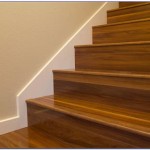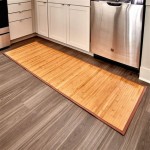Labor Cost for Installing Laminate Flooring: A Comprehensive Guide
Laminate flooring offers a durable and aesthetically pleasing alternative to hardwood at a more accessible price point. While the material cost is generally lower than hardwood, the labor cost for installation remains a significant factor in the overall project budget. Understanding the various elements that influence labor costs enables homeowners to make informed decisions, accurately estimate expenses, and potentially optimize their investment in new laminate flooring.
Several variables contribute to the final labor cost, making it essential to obtain detailed quotes from multiple installers. These variables encompass the complexity of the installation, the installer’s experience, geographical location, and any necessary preparatory work. This article will delve into these factors, providing a thorough overview of what to expect when budgeting for laminate flooring installation labor.
Factors Influencing Laminate Flooring Installation Labor Costs
Numerous interconnected elements dictate the price a contractor will charge for installing laminate flooring. Disentangling these factors is crucial for accurate budgeting and informed negotiation. Below we discuss the most significant considerations:
Project Complexity: The layout and condition of the existing floor significantly impact labor time. A simple, rectangular room with a level subfloor will require less labor than a room with an irregular shape, multiple doorways, or an uneven subfloor. Intricate patterns or borders within the laminate design also increase installation time and therefore labor costs.
Rooms with obstacles like pipes, radiators, or built-in cabinets require more precise cuts and fitting, adding to the complexity. Similarly, hallways or staircases, with their unconventional shapes and confined spaces, typically command a higher per-square-foot installation rate than open living areas.
Subfloor Preparation: The condition of the subfloor is often the most significant factor affecting labor costs. Laminate flooring requires a smooth, level, and clean subfloor for proper installation and longevity. If the existing subfloor is uneven, damaged, or contaminated with debris, additional preparation work is necessary. This might include:
- Leveling: Applying self-leveling compound to correct minor irregularities.
- Repairing: Filling cracks, holes, or damaged areas in the subfloor with patching compound.
- Replacing: Replacing sections of the subfloor that are severely damaged or deteriorated.
- Cleaning: Thoroughly cleaning the subfloor to remove dust, debris, and adhesive residue.
Each of these subfloor preparation tasks adds to the overall labor time and material costs. A contractor will typically assess the subfloor during the initial consultation and include the necessary preparation work in their quote. Failure to properly prepare the subfloor can lead to problems down the line, such as uneven flooring, squeaking, and premature wear.
Room Size and Scope: The size of the area to be floored directly correlates with the labor time required. Larger areas will naturally necessitate more time spent installing the laminate planks. However, a larger project might also translate to a lower per-square-foot installation rate, as the contractor can benefit from economies of scale. It's important to clarify if a lower per-square-foot rate applies to larger projects when obtaining quotes.
The scope of the project also influences the cost. For instance, removing existing flooring, disposing of old materials, and installing baseboards or quarter-round molding are typically considered separate tasks and will be priced accordingly. Clearly defining the project's scope in the initial agreement is crucial to avoid unexpected charges later on.
Installer Experience and Licensing: Experienced and licensed installers generally command higher rates than less experienced or unlicensed individuals. However, their expertise often translates to a higher quality installation, fewer errors, and a greater likelihood of adhering to building codes and manufacturer warranties. Licensed contractors typically carry insurance, providing homeowners with protection against potential damages or liabilities during the installation process.
While hiring an experienced professional might seem more expensive upfront, it can save money in the long run by preventing costly repairs or replacements due to improper installation. Homeowners should verify the installer's credentials, insurance coverage, and references before committing to a contract.
Geographic Location: Labor costs fluctuate significantly depending on geographic location. Areas with a higher cost of living typically have higher labor rates for all types of construction and renovation projects, including laminate flooring installation. Metropolitan areas tend to have higher rates compared to rural areas due to factors such as higher demand, increased operating expenses, and stricter building codes.
The availability of qualified installers in a given area also influences pricing. If there is a shortage of skilled labor, contractors can charge higher rates. Conversely, areas with a surplus of installers might see more competitive pricing.
Type of Laminate and Installation Method: The type of laminate flooring chosen can also affect the installation cost. While most laminate flooring utilizes a click-lock system for easy installation, some designs or plank sizes may require more precise cutting or handling, increasing labor time. Certain specialty laminate products, such as those designed for moisture-prone areas like bathrooms, might require specific installation techniques that demand specialized skills and expertise.
While less common, some laminate flooring might require gluing down to the subfloor, which is a more labor-intensive method than click-lock installation. Gluing down provides a more stable and quieter floor, but it also adds to the overall cost.
How to Estimate Laminate Flooring Installation Labor Costs
Estimating the labor cost for laminate flooring installation requires careful consideration of the factors outlined above. While obtaining quotes from multiple contractors is the most accurate approach, understanding the general pricing structure can help in initial budgeting.
Per-Square-Foot Pricing: Laminate flooring installation labor is commonly priced on a per-square-foot basis. The national average for labor costs ranges from $2 to $5 per square foot. However, this is a broad range, and the actual cost will depend on the specific project parameters.
To calculate the estimated labor cost, multiply the total square footage of the area to be floored by the per-square-foot rate. For example, a 200-square-foot room with a per-square-foot labor rate of $3 would have an estimated labor cost of $600. This is a basic estimate and does not include subfloor preparation, material removal, or baseboard installation.
Hourly Rates: Some contractors may charge an hourly rate for laminate flooring installation. Hourly rates typically range from $50 to $100 per hour, but can vary depending on the installer's experience, location, and the complexity of the project. Hourly rates are often used for smaller projects or projects with uncertain timelines, such as those involving extensive subfloor repairs.
Estimating labor costs based on hourly rates requires a careful assessment of the project's duration. Contractors can provide a time estimate based on their experience and the project details. Homeowners should clearly define the scope of work to minimize the risk of exceeding the estimated hours.
Additional Costs: It is crucial to factor in additional costs beyond the basic per-square-foot or hourly installation rates. These costs can include:
- Subfloor Preparation: Leveling, repairing, or replacing the subfloor can add significantly to the overall labor cost. Contractors typically provide separate estimates for subfloor preparation work.
- Material Removal and Disposal: Removing and disposing of existing flooring, such as carpet or tile, is usually a separate charge.
- Baseboard and Quarter-Round Installation: Installing new baseboards or quarter-round molding to cover the edges of the laminate flooring is another common add-on service.
- Furniture Moving: Moving furniture out of the area to be floored may incur an additional charge.
- Trip Charges: Some contractors may charge a trip fee to cover their travel expenses.
Requesting a detailed, itemized quote from each contractor will ensure that all potential costs are accounted for and avoid surprises later on.
Tips for Minimizing Laminate Flooring Installation Labor Costs
While labor costs are a significant part of the overall project budget, there are several strategies homeowners can employ to potentially reduce expenses:
DIY Subfloor Preparation: If the subfloor requires only minor repairs, such as filling small cracks or cleaning the surface, homeowners with basic DIY skills may be able to handle these tasks themselves. However, it is essential to exercise caution and follow proper procedures to avoid compromising the integrity of the installation.
Material Removal and Disposal: Homeowners can save money by removing the existing flooring themselves and disposing of the materials. This task can be time-consuming, but it can significantly reduce the overall labor cost.
Purchase Materials Independently: Sourcing the laminate flooring and underlayment independently can sometimes result in cost savings compared to purchasing materials through the installer. However, it is crucial to ensure that the chosen materials are compatible with the subfloor and installation method. Consult with the installer to confirm the suitability of the materials before making any purchases.
Obtain Multiple Quotes: Getting quotes from at least three different contractors is essential for comparing prices and services. Carefully review each quote to understand the scope of work, materials included, and any additional charges. Do not solely focus on the lowest price; consider the contractor's experience, reputation, and insurance coverage.
Schedule During Off-Peak Seasons: Contractors may offer lower rates during off-peak seasons, such as late fall or winter, when demand is typically lower. However, weather conditions can sometimes affect the installation process during these times.
Negotiate the Price: Do not hesitate to negotiate the price with contractors, especially if you have obtained multiple quotes with varying rates. Be polite and professional, and clearly communicate your budget constraints. Contractors may be willing to adjust their pricing to secure the project.
By carefully considering these factors and implementing these strategies, homeowners can effectively manage and potentially reduce the labor costs associated with laminate flooring installation. A thorough understanding of the process and proactive planning are key to a successful and cost-effective flooring project.

What S The Cost To Install Laminate Flooring Floorings

Cost To Install Laminate Flooring Home Pros

Cost To Install Laminate Flooring A Complete Guide 2024 Forbes Home

How Much Does It Cost To Install Laminate Flooring Homeserve Usa

How Much Should Laminate Flooring Fitting Cost In 2024 Checkatrade

How Much Does Flooring Installation Cost 2024 Guide

2024 Laminate Flooring Installation Cost Guide Angi

Fixr Com 2024 Laminate Flooring Installation Cost

How Much Does Laminate Flooring Installation Cost 2024 Guide

Fixr Com 2024 Laminate Flooring Installation Cost
Related Posts




































